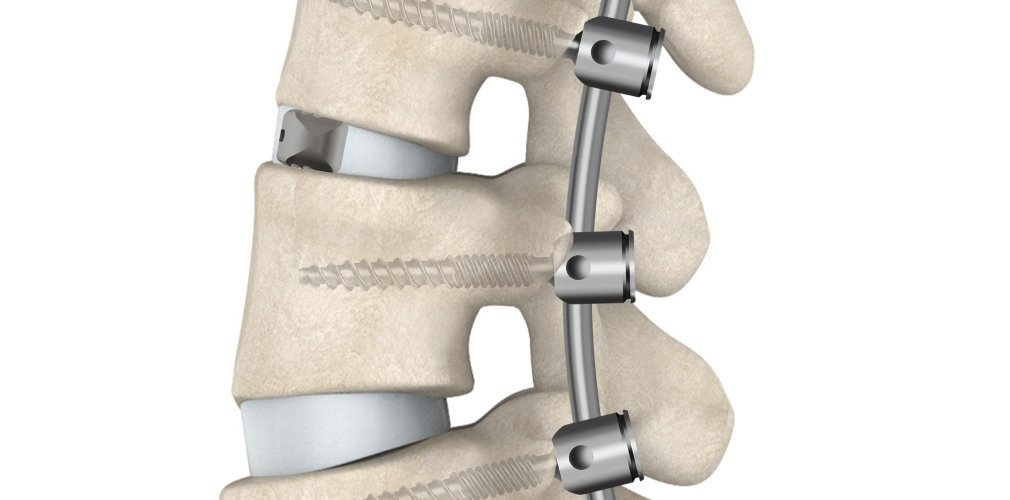Lumbar Fusion

Lumbar Fusion
Table of Contents
Contact Us
Related Videos :
Frequently Asked Questions :
1. How safe is lumbar fusion?
Lumbar fusion is a safe and well-established procedure when performed by experienced surgeons. Complications are rare and are minimized with modern techniques.
2. What is the recovery timeline?
Patients can resume light activities in 4–6 weeks, with full recovery taking 3–6 months. Physical therapy accelerates healing.
3. Are there alternatives to lumbar fusion?
Non-surgical options like medications, physical therapy, and spinal injections are considered before recommending surgery.

About Lumbar Fusion
Lumbar fusion is a surgical procedure aimed at stabilizing the spine by permanently joining two or more vertebrae in the lower back. This treatment is often necessary to alleviate chronic back pain or neurological symptoms caused by degenerative conditions, instability, or deformities.
Dr. Sandeep Vaishya, one of India’s leading neurosurgeons, specializes in advanced lumbar fusion techniques, ensuring minimal discomfort and faster recovery for his patients.
Causes Requiring Lumbar Fusion
Lumbar fusion is recommended for a variety of spinal conditions that compromise stability or cause persistent pain. Common causes include:
- Degenerative Disc Disease: When spinal discs lose flexibility and cushioning, resulting in pain and instability.
- Spondylolisthesis: A condition where one vertebra slips over another, causing nerve compression.
- Spinal Stenosis: Narrowing of the spinal canal, leading to nerve pinching and discomfort.
- Herniated Discs: When a damaged disc presses on nearby nerves, causing pain and mobility issues.
- Spinal Fractures or Tumors: Stabilizing the spine after an injury or removing tumors affecting vertebrae.
Dr. Vaishya conducts thorough evaluations to determine whether lumbar fusion is the right solution for each patient.
Types of Lumbar Fusion Techniques
The surgical technique used for lumbar fusion depends on the patient’s specific condition and overall health. Common methods include:
- Posterior Lumbar Interbody Fusion (PLIF)
- Approach: From the back.
- Suitable for severe degenerative issues.
- Transforaminal Lumbar Interbody Fusion (TLIF)
- Approach: A minimally invasive entry through the back.
- Benefits: Less tissue damage and quicker recovery.
- Anterior Lumbar Interbody Fusion (ALIF)
- Approach: From the front (abdomen).
- Benefits: Preserves back muscles and provides direct access to the spine.
- Lateral Lumbar Interbody Fusion (LLIF)
- Approach: Side entry.
- Ideal for correcting spinal alignment.
Dr. Vaishya utilizes cutting-edge tools and techniques to ensure precision and optimal outcomes for his patients.
Symptoms That Indicate Lumbar Fusion May Be Needed
Patients experiencing the following symptoms may be candidates for lumbar fusion:
- Persistent lower back pain despite non-surgical treatments.
- Radiating leg pain, numbness, or tingling due to nerve compression.
- Weakness or loss of control in the legs.
- Deformities such as scoliosis affecting posture and movement.
- Difficulty in performing daily activities due to spinal instability.
If you’re facing any of these issues, consulting an expert like Dr. Vaishya can help determine the best treatment plan.
Diagnosis
Accurate diagnosis is critical before proceeding with lumbar fusion. The process includes:
- Physical Examination: Evaluating pain, mobility, and reflexes.
- Imaging Tests:
- MRI: To detect nerve or soft tissue damage.
- CT Scan/X-rays: For detailed visualization of bone structures.
- Nerve Function Tests: Assessing the impact of compression on nerve activity.
These tests allow Dr. Vaishya to tailor the surgery to the specific needs of each patient.
Treatment: The Lumbar Fusion Procedure
Preoperative Stage
Dr. Vaishya prepares patients with:
- Detailed medical evaluations to rule out complications.
- Instructions regarding medications, fasting, and hospital stay.
During Surgery
The procedure typically involves:
- Removing the damaged disc or bone material causing instability.
- Placing bone grafts (natural or synthetic) to promote fusion.
- Using screws, rods, or plates for added support.
Cost and Stay in India
India is recognized for offering world-class spinal surgeries at affordable prices. For lumbar fusion:
- Cost: Typically ranges between $5,000–$7,000, depending on the complexity of the case. This includes hospital stay, surgery, and post-op care.
- Hospital Stay: Usually 2–5 days, with options for extended rehabilitation.
- Why India?: State-of-the-art facilities, internationally trained surgeons, and cost-effective treatment attract patients worldwide.